Oviraptor is one of the most misunderstood dinosaurs. It lived in Asia during the Late Cretaceous period. Initially, it was classed as an “Egg Thief” due to its fossils’ proximity to a nest of eggs. Later research overturned this view, suggesting that Oviraptor was just brooding over its eggs. Its jaws are not suited for eating eggs. Instead, the dinosaur was adapted to consuming very hard food. Alas, the name stuck. This article explores Oviraptor’s discovery, anatomical features, dietary habits, and changes in its public perception.
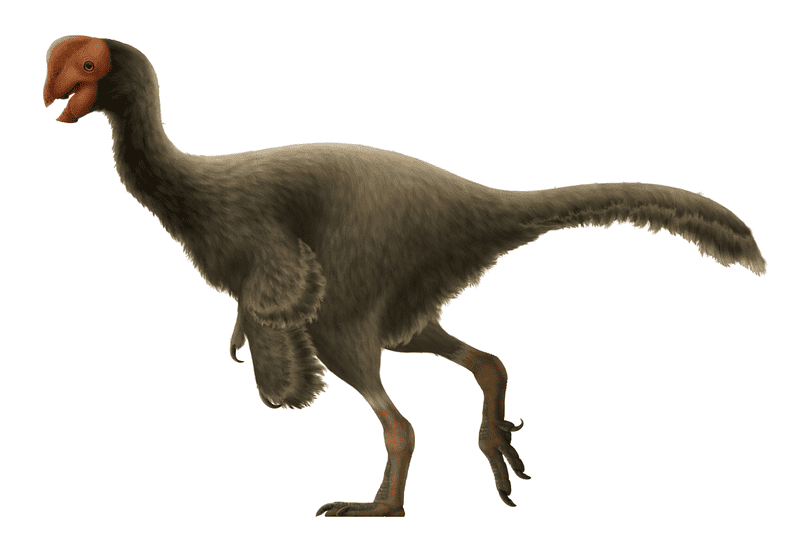
Discovery and History
The story of Oviraptor begins in the heart of Asia, within the layered sediments of Mongolia’s Djadokhta Formation. In 1923 Roy Chapman Andrews ventured into the Gobi Desert’s Flaming Cliffs, uncovering a trove of dinosaur remains. Among these discoveries was a peculiar fossil, initially mistaken for an egg predator. Henry Fairfield Osborn named the specimen Oviraptor philoceratops in 1924.
Oviraptor was initially classified within the Ornithomimidae, a group of bird-like dinosaurs. This classification was based on a misunderstanding of its anatomy and ecological niche. It wasn’t until careful re-examinations by Mongolian paleontologist Rinchen Barsbold in the 1970s that Oviraptor was recognized as a distinct genus with its own family, the Oviraptoridae.

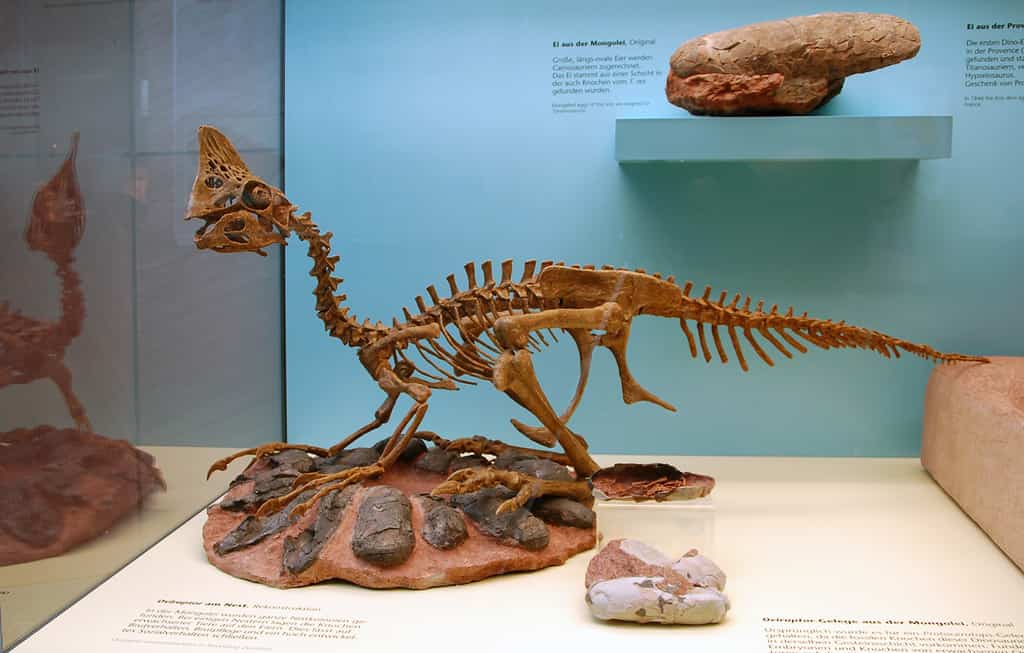
Subsequent discoveries and analyses throughout the 20th and 21st centuries have painted a different picture of Oviraptor. The so-called “egg thief” was likely a caring parent, brooding over its nest in a protective manner reminiscent of modern birds. This is supported by the finding of numerous oviraptorid specimens in similar nesting poses, directly challenging Osborn’s earlier interpretation.
Description and Anatomy
Oviraptor is a small and intriguing member of the oviraptorid family with distinctive physical characteristics. Scientists estimate it to have grown to approximately two meters in length and weigh between 33 to 40 kilograms. Unlike the terrifying appearance of larger theropods, Oviraptor was much less threatening.
Its skull is remarkably toothless and equipped with a strong, parrot-like beak. This dinosaur was not made for tearing and shredding like most theropods. The skull was relatively short and deep, which supported powerful jaw muscles. The absence of teeth was compensated for by a robust beak, likely used for cracking or crushing hard-shelled food items. Its head was probably adorned with a crest, which could have been a display feature for mating or social interactions within its species.

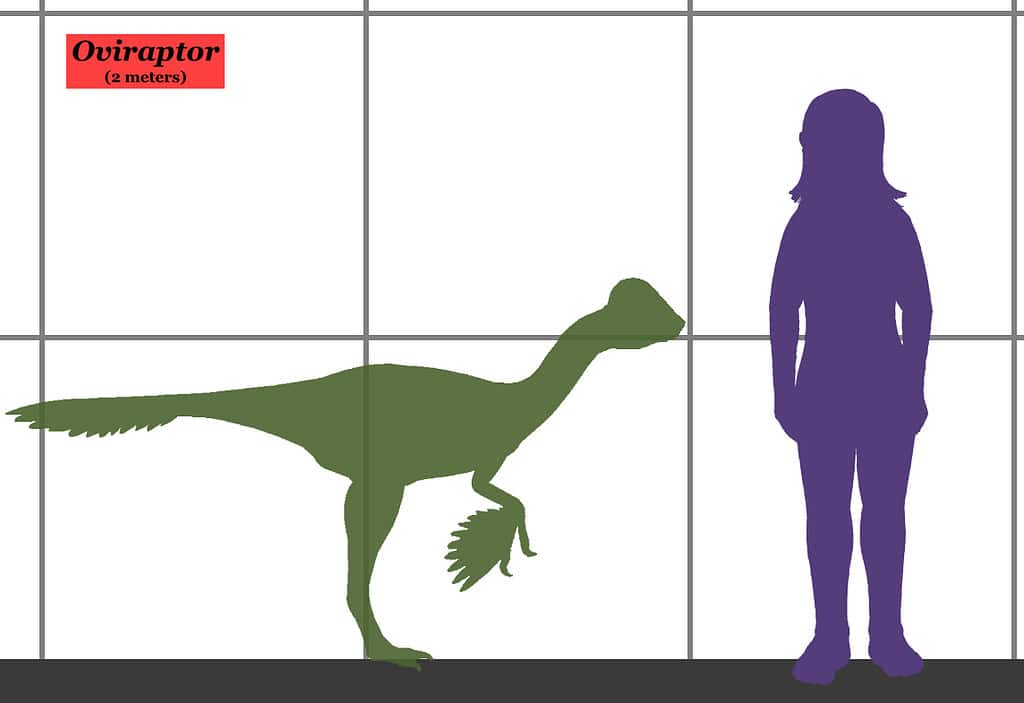
The rest of Oviraptor’s anatomy reflects agility and perhaps opportunistic feeding. Its forelimbs were elongated, ending in three-fingered hands with curved claws, suggesting a capability for grasping or manipulating objects. The well-developed arms and the presence of feathers highlight intriguing adaptations similar to modern birds. These features might have also played a role in display behaviors and the brooding of eggs, providing warmth and protection.
The hindlimbs of Oviraptor were long and likely quite powerful, equipped with four-toed feet. This configuration suggests a life spent mostly on the ground, allowing Oviraptor to run swiftly to catch prey or evade predators. The relatively short tail ends in a pygostyle—a tail feather structure — making this dinosaur even more remarkably bird-like in appearance and behavior.
Paleobiology and Diet
The paleobiology of Oviraptor, particularly its diet and feeding habits, has been a subject of much speculation since its discovery. Originally cast as an egg snatcher, further research has unveiled a more complex and nuanced picture.
The robust, toothless jaws of Oviraptor, capped with a parrot-like beak, suggest a versatile diet. The shape and build of the beak imply a strong biting force, capable of cracking open hard shells. This characteristic led to theories that Oviraptors may have preyed on shelled creatures like mollusks or even consumed seeds and nuts, similar to the dietary habits of modern parrots.

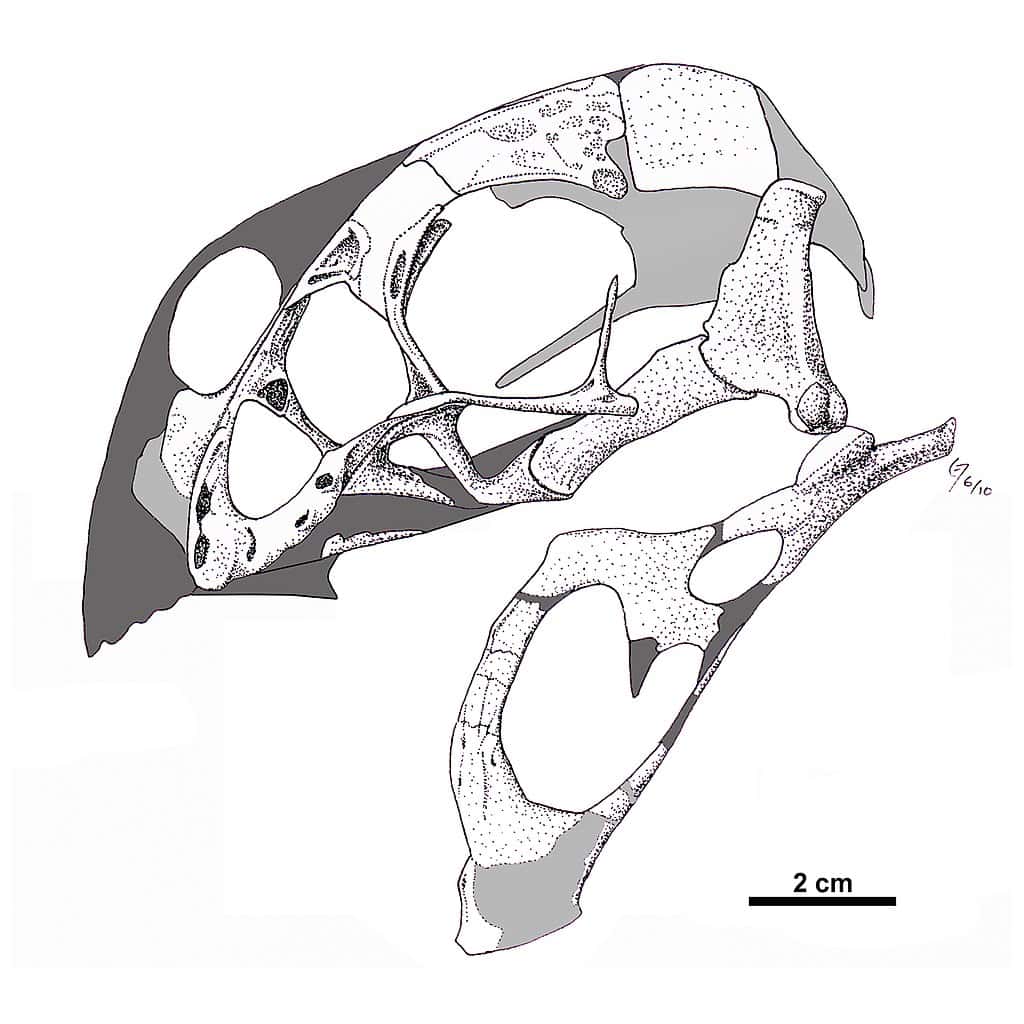
Contrary to the initial portrayal as an egg predator, evidence points towards a more omnivorous diet. The discovery of a lizard within the body cavity of an Oviraptor suggested that small vertebrates were on the menu. This finding supports the idea that the Oviraptor’s beak was also for precision in grabbing and consuming smaller prey. The pointed projections on the palate might have played a role in gripping or slicing food. Moreover, the comparison of Oviraptor’s skull to those of modern birds and reptiles has shed light on its feeding behavior. If Oviraptor was indeed much like a parrot, its diet must have included fruits and seeds.
Reproduction and Nesting Behaviors
The reproductive behaviors and nesting practices of Oviraptor have significantly altered our perception of this dinosaur. Discoveries over the years have unveiled a picture of Oviraptor as a creature likely engaged in careful parental care. Central to this reinterpretation was the discovery of Oviraptors found close to their nests. These specimens were found crouched over nests like modern birds, indicating they were likely incubating their eggs. Their feathered limbs were positioned around the eggs to cover and protect them. This posture suggests a level of parental investment that challenges the notion of dinosaurs as dispassionate reptiles.
The structure of Oviraptor’s nests was complex. The nests were composed of arranged eggs in circular patterns, indicating a deliberate and methodical approach to egg-laying. This organized structure facilitated the incubation process and may have also protected the eggs from predators and environmental extremes.

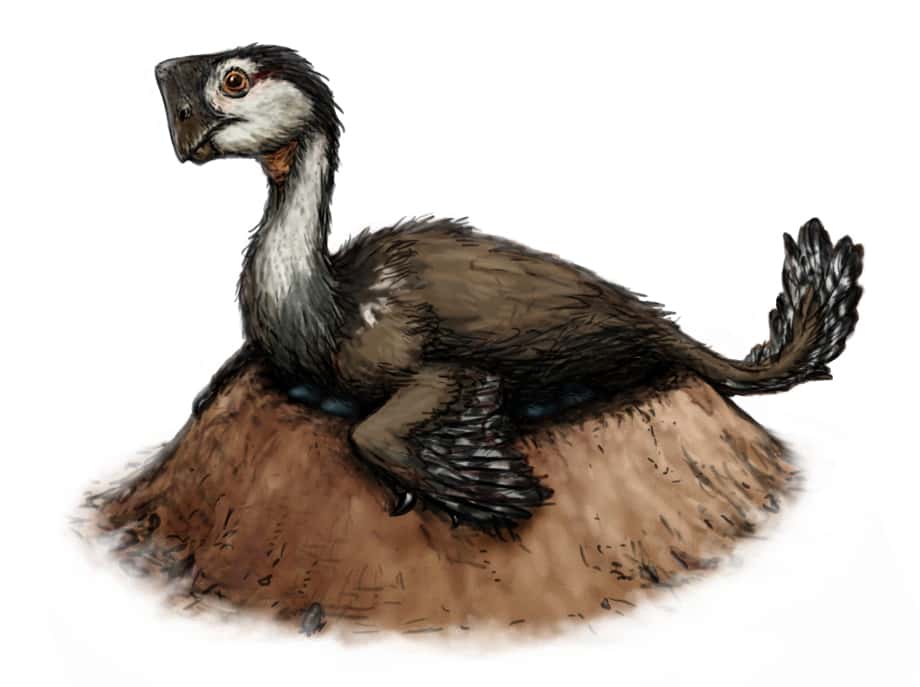
The microscopic structure of Oviraptor eggs has revealed the presence of cuticle layers, similar to modern bird eggs. These layers serve protective functions, such as minimizing water loss and preventing microbial infection. The adaptation of such features suggests that oviraptorids laid their eggs in arid or semi-arid environments, where these evolutionary innovations mitigated the risk of dehydration and overheating. The discovery of juvenile Oviraptors in association with nests provides additional evidence of post-hatching care. This finding implies not only an investment in the protection of eggs but also the nurturing of offspring after hatching.
Oviraptor in Popular Culture
Oviraptor’s depiction in popular culture has changed over time, paralleling scientific discoveries that have reshaped our understanding of this dinosaur. This switch from an alleged “egg thief” to a more complex creature is mirrored in some of its media portrayals, from animated films to documentaries.
In Disney’s “Dinosaur” (2000), Oviraptor is presented in line with older stereotypes. An Oviraptor steals the protagonist’s egg to eat it but loses it in the river as a rival Oviraptor tries to steal it again. Although it doesn’t play a major role, it features a memorable scene that moves the plot forward.

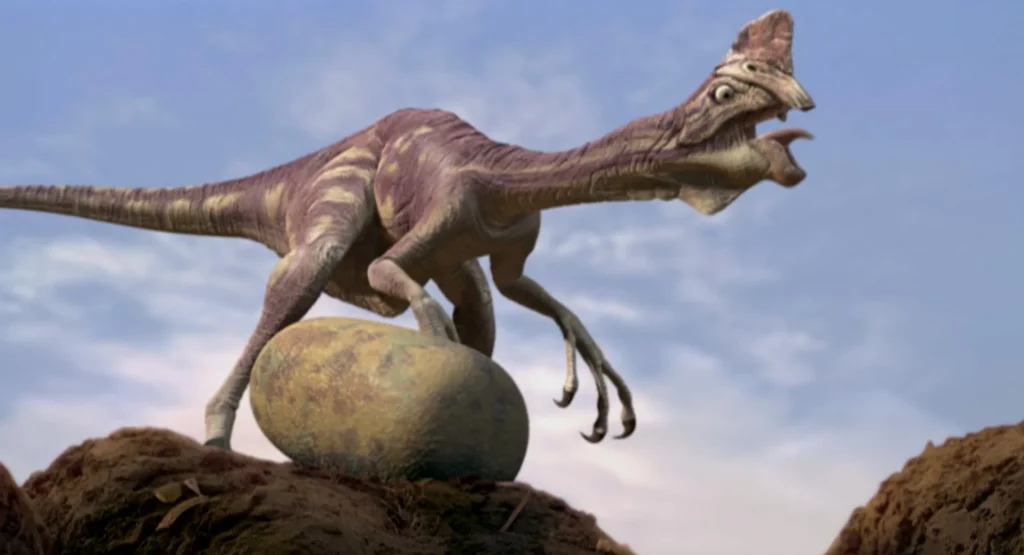
“Planet Dinosaur,” produced by the BBC, offers viewers a representation of Oviraptor more grounded in the latest paleontological research. This documentary series portrays the genus not as an egg thief but as a thoughtful parent capable of sophisticated behaviors like nesting and caring of juvenilles.
“Dinosaur Planet”, a 2003 Discovery Channel documentary series, focuses on the day-to-day challenges faced by Oviraptor. It explores aspects of its diet, reproductive behavior, and interaction with its environment, painting a picture of Oviraptor’s life beyond the egg theft myth. This documentary, like “Planet Dinosaur”, provides a more compelling, evidence-based view of these theropods.
Oviraptor is also featured in the video game “ARK: Survival Evolved.” In this game, Oviraptor appears as a creature that players can use to increase the efficiency of egg production among tamed dinosaurs.
Thanks for your feedback!
